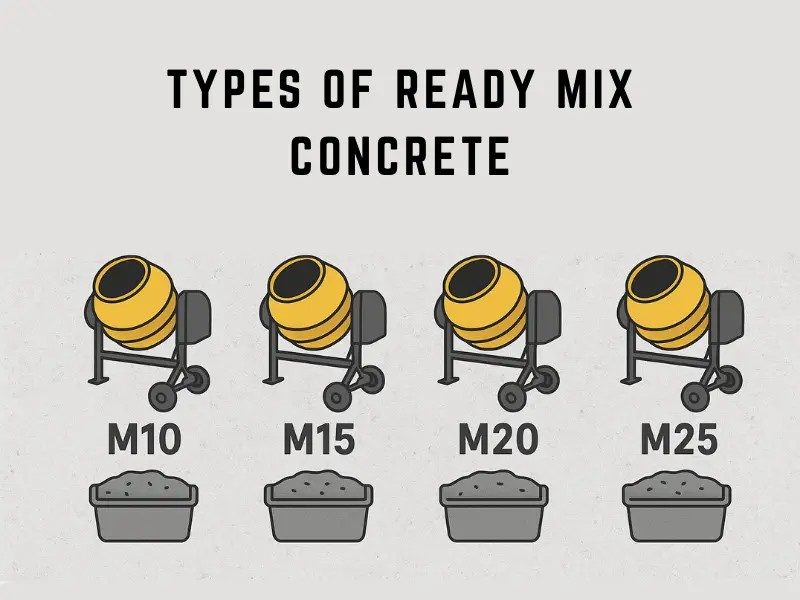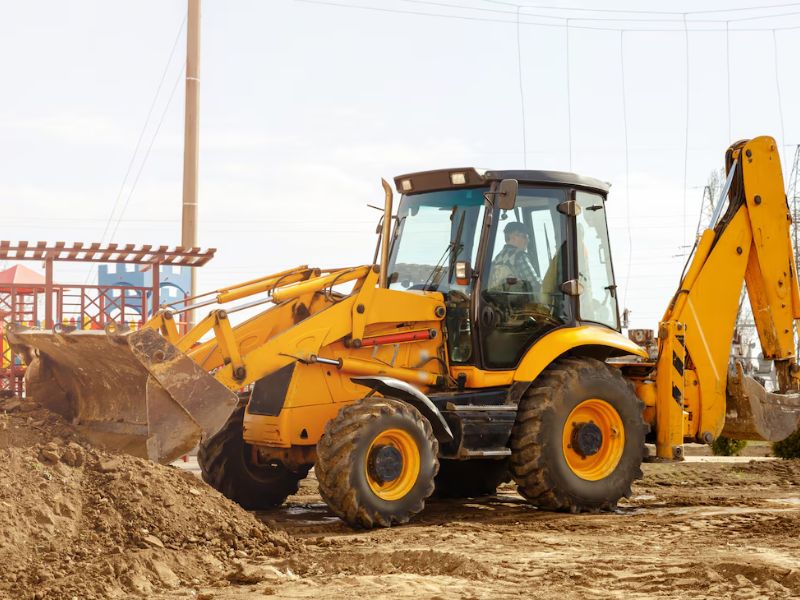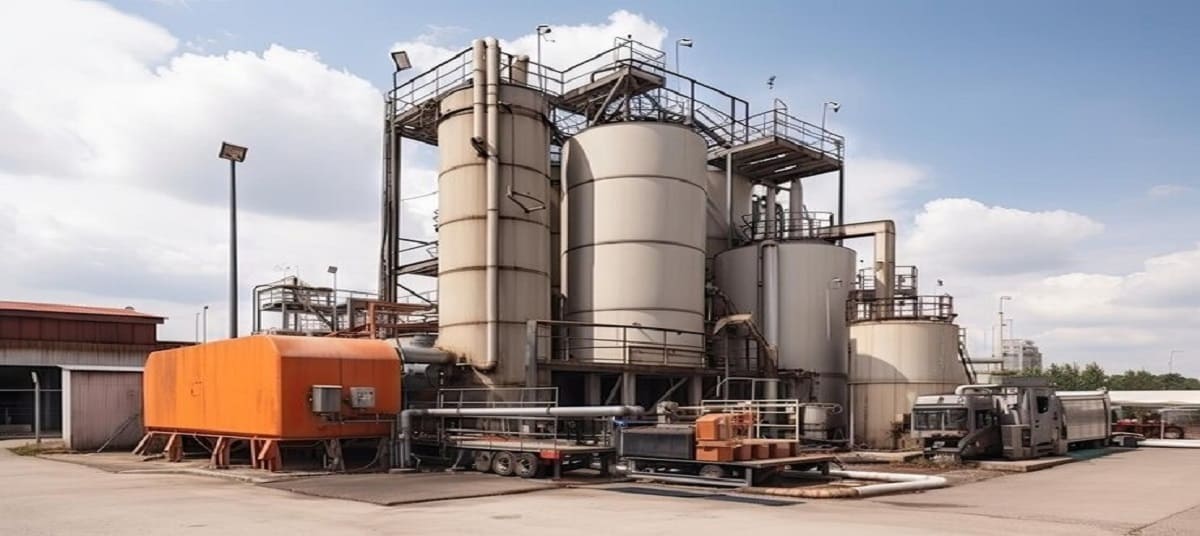When undertaking any construction work, one of the most significant choices is selecting the correct grade of concrete. Every grade has its own particular strength, mix proportion, and use. If you have ever been curious about what words like M10, M15, M20, or M25 concrete signify, this article will demystify them for you in an easy-to-understand manner. We will also talk about the difference between nominal mix vs design mix concrete, proportioning mix and where each mix grade might typically be used. By the end of this guide, you will have complete clarity on the Ready Mix Concrete Grades system and know how to select the proper grade for your next project.
What Are Ready Mix Concrete Grades?
Concrete grade is the compressive strength of the concrete after 28 days of curing. It is a measure expressed in N/mm² (Newtons per square millimetre). Grades in practice serve to define where a mix is safe to use, whether for a domestic floor slab, a beam to support loads, or a commercial foundation.
For instance, M20 concrete specifies the mix has a typical compressive strength of 20 N/mm². “M” means “Mix,” then comes the number that denotes the strength.
Grades in ready mix concrete provide consistency, quality, and structural compliance. Most of the suppliers give a concrete grade table or a concrete grade chart indicating the strength, mix proportion, and uses of each.
Types of Ready Mix Concrete
Before delving further into grades, it is useful to know about the two broad methods of concrete mix design:
1. Nominal Mix Concrete
Nominal mixes are fixed cement-sand-aggregate proportions for lower grades such as M10, M15, and M20. M15 concrete, for instance, employs a common ratio of 1:2:4 (cement: sand: aggregate). These mixes are convenient to mix, but do not consider special project needs.
2. Design Mix Concrete
Design mixes are employed for increased grades, typically beginning with M25 and above. Rather than set proportions, engineers compute the concrete mix design considering project requirements, material characteristics, and desired strength. The approach guarantees higher quality control and dependability for big structures or critical applications.
Different Grades of Concrete Explained
Let us take a look at the most popular construction concrete grades, their mix ratio, and uses.
M10 Concrete
Mix Ratio: 1:3:6 (cement: sand: aggregate)
Strength: 10 N/mm²
Use: Generally used for non-structural purposes such as pathways, levelling, or blinding layers.
M15 Concrete
Mix Ratio: 1:2:4
Strength: 15 N/mm²
Use: Ideal for plain foundations, floors, and small domestic projects.
M20 Concrete
Mix Ratio: 1:1.5:3
Strength: 20 N/mm²
Use: Most popular grade for domestic slabs, driveways, and light load-bearing works.
M25 Concrete
Mix Ratio: Design mix (variable)
Strength: 25 N/mm²
Use: Specially suitable for beams, columns, and reinforced concrete in multi-story buildings and commercial buildings.
Higher grades such as M30, M35, M40, etc., are also employed in major infrastructure projects, high-rise buildings, and other structures where higher durability and strength are needed. These belong to various concrete strength classes according to international standards.
Concrete Mix Proportions and Ratios
Having the right proportions of concrete mix is necessary to achieve workability, strength, and durability. For low-grade mixes (M10–M20), nominal proportions 1:2:4 or 1:3:6 are used.
For the higher grades, the mix is designed by testing the characteristics of the available cement, sand, and aggregates. This is where concrete mix design plays its role, with the correct cement, sand, and aggregate proportion chosen for the strength and site requirements.
Ready Mix Concrete Types in Practice
When ordering from suppliers, you’ll usually find two main ready-mix concrete types:
Transit Mixed Concrete – Ingredients are mixed inside the truck during transit.
Central Mixed Concrete – Ready Mix Concrete plant mixes the concrete at the facility and delivers it to your site in a truck mixer.
Both options can be supplied in different grades depending on the project requirements.
Concrete Grade Chart (Quick Reference)
Here’s a simplified concrete grade table for commonly used grades:
| Concrete Grade | Mix Ratio (Nominal) | Compressive Strength | Typical Use |
| M10 | 1:3:6 | 10 N/mm² | Pathways, leveling |
| M15 | 1:2:4 | 15 N/mm² | Simple foundations, flooring |
| M20 | 1:1.5:3 | 20 N/mm² | Residential slabs, driveways |
| M25 | Design mix | 25 N/mm² | Beams, columns, RCC structures |
How to Choose the Right Ready Mix Concrete Grade
The following are some tips to guide you:
For flooring, pathways, and non-structural applications: M10 or M15 is adequate.
For residential slabs and light load-carrying structures, M20 is widely used.
For beams, columns, and reinforced applications: M25 or more provides increased durability.
For industrial, commercial, or high-rise work: Consult with engineers to specify a design mix above M25.
Keep in mind, the appropriate grade is not just a matter of strength but also soil condition, load demand, and weather exposure.
Conclusion
Ready-mix concrete grades should be taken into consideration to arrive at the best choices in terms of construction. While for minor works you would have M10 and M15, M20, and M25 are design mixes for structural purposes. Among nominal mix concrete and design mix concrete, the former is used if the project is a small one and has no complexities involved, while the latter is used for large and complex projects.
If you are planning for a project wherein your maximum combination of strength, price, and wear is needed, speak to a dependable supplier who can give recommendations based on the concrete grade table as well as suggest the best suitable mix for your application.
Need expert advice or ready mix availabilities? Give us a call today at +91 9810104659 for an outline of your project requirements and a personalised recommendation.













